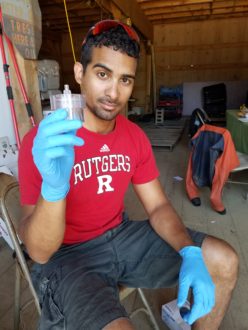Knowing that early detection is the most effective strategy to control invasive species, Rutgers University PhD student Rafael Valentin used his Northeast SARE Graduate Student grant to explore a technique using insect DNA to track the brown marmorated stinkbug (BMSB, Halyomorpha halys).
Within the past 20 years, BMSB has become a devastating pest across the mid-Atlantic, causing significant damage to a wide range of crops. Rafael’s research looked at adapting environmental DNA (eDNA) techniques used in acquatic settings for use in peach and vegetable crops for nascent BMSB populations. By testing crop surfaces, topsoil beneath crops, and crop wash water, he was able to determine that BMSB leave a genetic trail detectable in both laboratory and field trials.
Results suggest that eDNA surveillance outperformed traditional monitoring practices (like black light and pheromone traps) for early detection of BMSB. Although more research is needed--including establishing appropriate detection thresholds and developing eDNA technology into a practical, cost-effective diagnostic tool—Rafael’s research results shows the promise of this rapid detection method for nascent exotic insect pest populations.
